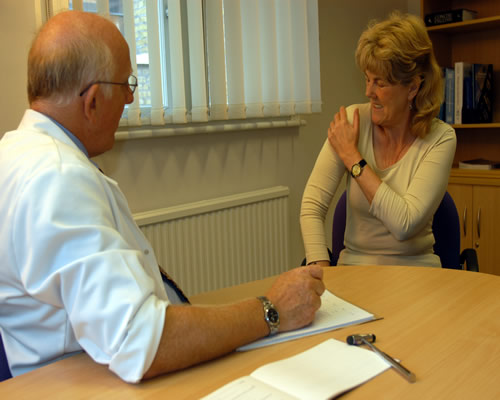Clinical Standards Advisory Group (CSAG) Report on Back Pain
The Clinical Standards Advisory Group was set up in 1991 as an independent source of expert advice to the UK Health Ministers and to the NHS on standards of clinical care for, and access to and availability of services to, NHS patients. In October 1992 CSAG was asked by the Health Ministers to "advise on the standards of clinical care for, and access to and availability of services to, NHS patients with back pain".
The size of the problem
This advice was sought in the wake of evidence that back pain is reported by 60% of the population at some time in their life, that statistics for 1991-92 showed 81 million days Sickness and Invalidity Benefit paid for back incapacities and an estimate of the latter having risen to 106 million days by 1993-94- Statistics for 1993 showed:
The annual costs of NHS services for back pain were estimated at £480 million, lost production costs were estimated at £3.8 billion and DSS benefits at £1.4 billion.
The CSAG's Epidemiological Review found that backache is a common bodily symptom which most people deal with themselves most of the time and that there is generally no serious underlying pathology. At pre~ent, standard medical management for back pain is by rest and analgesic medication according to orthopaedic principles and teaching. Although there is no evidence to support the use of rest for simple backache for more than 1-3 days and the ill effects of prolonged rest are well recognised. Patients may require symptomatic help for pain relief but for a successful final outcome management should be directed to restoring function by active rehabilitation.
The management of back pain
CSAG recommended an initial diagnostic triage between simple backache, nerve root problems and possible serious spinal pathology and that this triage should be undertaken generally by the GP, or by physical therapists or practitioners. Patients with simple backaches should be treated mainly in primary care.
The time scale of management is important there being clear epidemiological evidence that the longer the duration of back pain and of work loss the less successful the outcome of treatment and the lower the chance of getting the patient back to work. The first six weeks are crucial in preventing chronicity.
The role of osteopathy
The CSAG Report lays stress on the key role of physical therapy in the management of simple backache and sees physical therapy as having four components: U symptomatic treatment to control pain D manipulation D rehabilitation D education on prevention and personal responsibility for continued management.
Such physical therapy is provided by osteopaths, chiropractors and physiotherapists and the CSAG Report acknowledges that osteopaths and chiropractors, and to a lesser extent physiotherapists, have specific professional training and expertise in manipulation. The CSAG Report states that there is no convincing evidence that lumbosacral X-rays are necessary before manipulation.
In the management of simple backache CSAG sees good clinical practice and standards of care represented by the following target times following referral by the GP to the physical therapist: urgent - should be seen within 2 hours routine - should be seen within two weeks all patients with acute back pain, from whatever cause, to be seen by a physical therapist before they have been off work for six weeks
Recommendations
The recommendations of the CSAG Report
include: General practitioners should have direct access to physical therapy
Physical therapy for NHS patients may be provided by osteopaths, chiropractors and physiotherapists Greater professional and academic collaboration between medical practitioners, physiotherapists, osteopaths and chiropractors should be supported and encouraged Manipulation should be available as a therapeutic option for the treatment qf NHS patients Back pain should now be included as a key area for Health qf the Nation
The profession of osteopathy recognises that it has an inlportant part to play in the management of back pain. After 90 years of development of the profession to the point where the educational and ethical process is highly developed, osteopaths are ready to accept the challenge provided by the CSAG Report.


